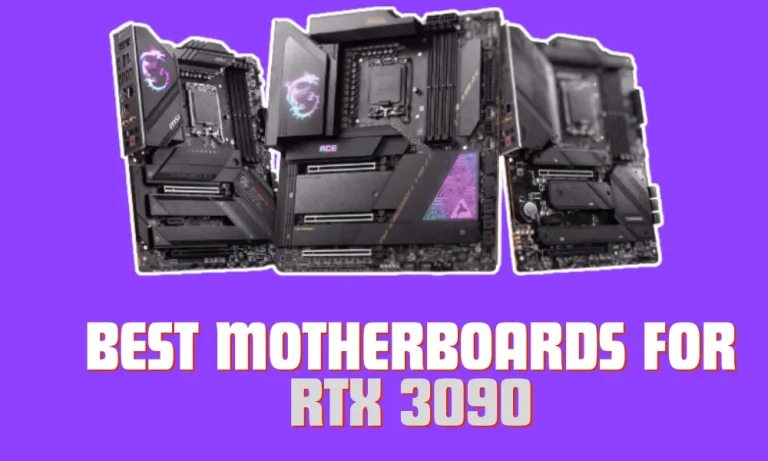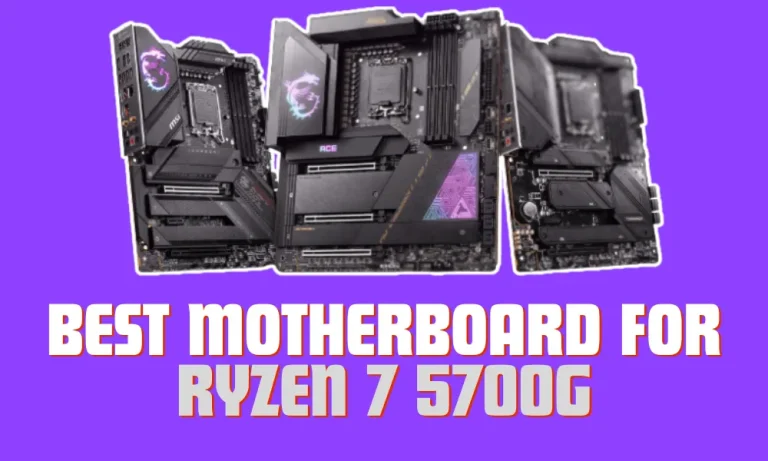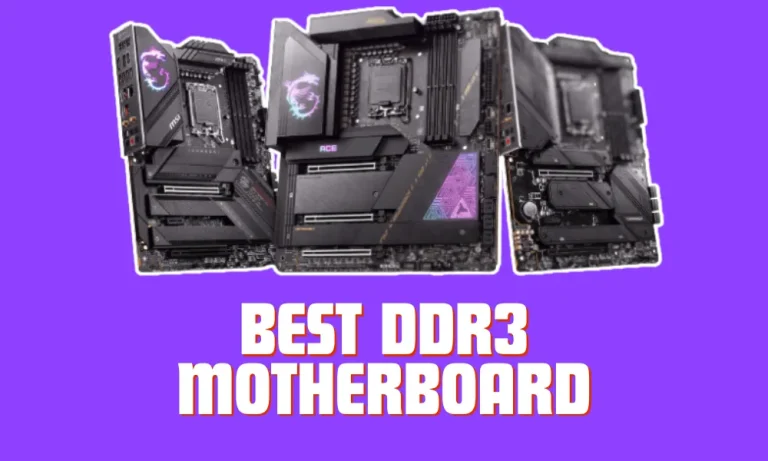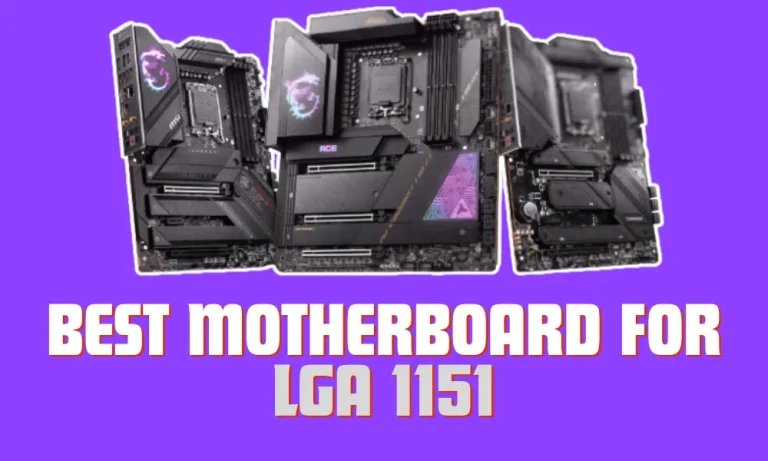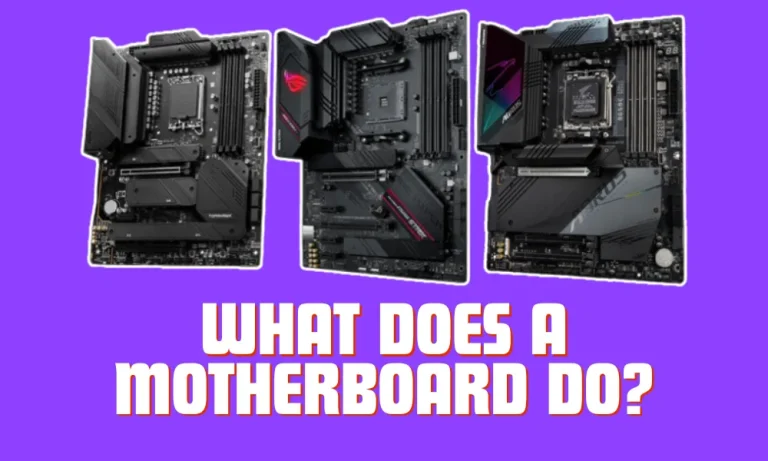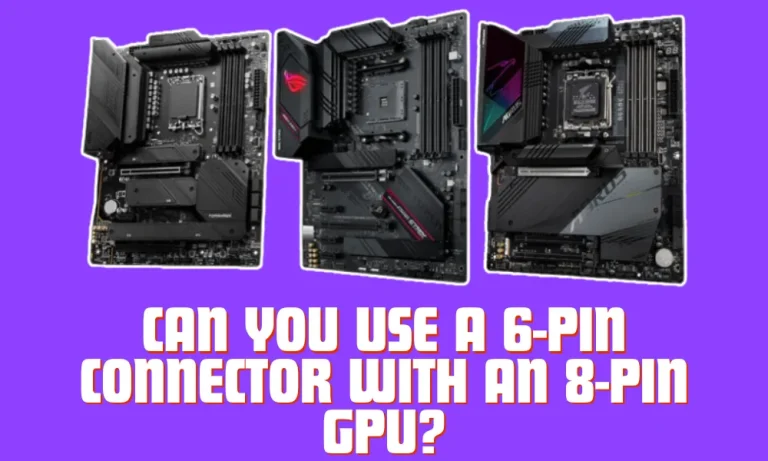How to Tell if Motherboard is Bad or Dead?
Is your computer acting up? It could be a sign of a bad or dead motherboard. Don’t panic, though! In this guide, we’ll walk you through the telltale signs that your motherboard might be the culprit. From mysterious crashes to unresponsive USB ports, we’ll help you troubleshoot your way to a solution. Let’s get started!
Signs of a Bad or Dead Motherboard
Is your computer acting strangely? It could be due to a faulty motherboard. Let’s explore the common symptoms that indicate a motherboard issue. By identifying these signs, you can take the necessary steps to address the problem and get your computer up and running smoothly again.
No Power or Booting Issues
One of the most obvious signs of a bad motherboard is when your computer refuses to power on or experiences difficulties booting up. If pressing the power button doesn’t elicit any response, it’s likely a motherboard problem.
Continuous Beeping Sounds During the Startup
When you hear a series of beeping sounds coming from your computer during startup, it’s a clear indication that something is wrong. These beep codes are generated by the BIOS and can point to a faulty motherboard.
Random System Crashes or Freezes
If your computer frequently crashes or freezes without any apparent reason, it might be due to a malfunctioning motherboard. This can occur during intense tasks or even during regular usage.
USB Ports or Other External Connectors Not Functioning
When your USB ports or other external connectors stop working, it could be a sign of a motherboard issue. Devices connected to these ports may not be recognized or fail to function properly.
BIOS Error Messages
If you encounter error messages related to the BIOS during startup or while using your computer, it’s worth investigating the motherboard as the potential source of the problem. These errors can indicate hardware failures.
Overheating or Burning Smell
An overheating motherboard can cause various issues. If you notice excessive heat emanating from your computer or detect a burning smell, it’s crucial to investigate the motherboard’s condition.
Display or Audio Issues
Problems with your computer’s display, such as flickering, distorted images, or no signal, can be attributed to a faulty motherboard. Similarly, if you experience audio malfunctions, the motherboard might be the culprit.
Inconsistent Performance
A motherboard in poor health can lead to inconsistent overall system performance. You may notice sluggishness, delays, or unresponsiveness, even when performing routine tasks.
Troubleshooting Steps: Diagnosing a Bad or Dead Motherboard
If you suspect that your motherboard is causing issues, don’t fret! There are several troubleshooting steps you can take to diagnose the problem. By following these steps, you can determine whether your motherboard is indeed faulty and take appropriate action.
Step 1: Checking Power Supply and Connections
Start by ensuring that your computer is receiving power. Check the power cables and connections to make sure everything is securely plugged in. Faulty power supply or loose connections can mimic motherboard issues, so it’s essential to rule out this possibility first.
Step 2: Testing RAM and Other Components
Faulty RAM or other components can sometimes cause problems that appear to be motherboard-related. Test your RAM sticks by removing them one by one and powering them on your computer. If the issue is resolved after removing a particular RAM stick, it might be defective. Additionally, disconnect any unnecessary components and peripherals to see if they are causing conflicts.
Step 3: Clearing CMOS
Clearing the CMOS (Complementary Metal-Oxide-Semiconductor) can help reset the motherboard’s settings to their default state. This process involves either removing the CMOS battery for a few minutes or using a jumper on the motherboard. Refer to your motherboard’s manual for specific instructions on how to perform this step.
Step 4: Inspecting Capacitors for Bulging or Leaking
Faulty capacitors can indicate a failing motherboard. Inspect the capacitors on the motherboard for any signs of bulging, leaking, or other damage. If you notice any abnormalities, the motherboard likely needs to be replaced.
Step 5: Using Diagnostic Tools or Software
There are various diagnostic tools and software available that can help identify motherboard issues. These tools can test and analyze different aspects of your computer’s hardware, including the motherboard. Conduct a thorough diagnostic using reliable software to get a better understanding of the problem.
Step 6: Seeking Professional Assistance if Necessary
If you’ve exhausted all the troubleshooting steps and are still unsure about the condition of your motherboard, it’s best to consult a professional. Certified technicians have the expertise and specialized tools to accurately diagnose and repair motherboard issues. Don’t hesitate to reach out for professional assistance when needed.
Prevention and Maintenance: Tips for a Healthy Motherboard
To ensure the longevity and optimal performance of your motherboard, it’s important to take preventive measures and practice regular maintenance. By following these tips, you can minimize the chances of encountering motherboard issues and keep your computer running smoothly.
Regularly Clean the Computer and Ensure Proper Airflow
Dust and debris can accumulate inside your computer, blocking airflow and causing components, including the motherboard, to overheat. Regularly clean the computer case, fans, and vents to prevent overheating. Ensure that there is proper airflow by organizing cables and maintaining an unobstructed path for air circulation.
Avoid Overclocking Beyond Recommended Limits
Overclocking can provide a performance boost, but pushing your hardware beyond its recommended limits can lead to excessive heat generation and voltage spikes. This can put unnecessary stress on the motherboard and other components, increasing the risk of failure. Stick to the recommended specifications and avoid excessive overclocking.
Use High-Quality Power Supply Units
A stable and reliable power supply is crucial for the health of your motherboard. Invest in a high-quality power supply unit (PSU) that can deliver sufficient power and maintain consistent voltage levels. A low-quality PSU with inconsistent power output can cause damage to the motherboard and other components.
Update BIOS and Drivers Regularly
Manufacturers release BIOS updates and driver updates to address bugs, improve compatibility, and enhance performance. Regularly check for updates on the manufacturer’s website and install them as needed. Updated BIOS and drivers can help prevent compatibility issues and ensure optimal performance.
Handle Components Carefully During Installation or Upgrades
When installing or upgrading components, such as RAM or graphics cards, handle them with care. Avoid excessive force or improper installation techniques that may cause physical damage to the motherboard or its components. Follow the manufacturer’s instructions and take precautions to prevent accidental damage.
FAQs: How to Tell if Motherboard is Bad or Dead
What are the signs of a bad or dead motherboard?
Common signs include no power or booting, frequent system crashes or freezes, no display output, USB or peripheral failures, and abnormal beeping sounds.
How can I test if my motherboard is the issue?
Start by checking the power supply, ensuring all connections are secure. Test individual components on another system to rule out faulty hardware. Clear the CMOS, inspect capacitors for damage, and utilize diagnostic tools for further analysis.
Is there a way to check if the motherboard is dead without professional help?
Yes, you can perform basic troubleshooting steps like reseating RAM and other components, testing with a known working power supply, and checking for any physical damage or burnt-out capacitors.
Can a bad CPU or RAM be mistaken for a bad motherboard?
Yes, a faulty CPU or RAM can exhibit similar symptoms as a bad motherboard. To determine the cause, test the CPU and RAM on another compatible system to determine if they are functioning properly.
When should I consider seeking professional assistance?
If you have exhausted all troubleshooting steps and are still unable to determine if the motherboard is the issue, or if you lack the technical expertise to diagnose the problem accurately, it is advisable to consult a professional technician or a computer repair service for assistance.
Conclusion
Determining whether your motherboard is bad or dead can be a daunting task. However, by following the troubleshooting steps and considering the symptoms, you can make an informed diagnosis. Remember to check the power supply, test components, clear CMOS, inspect capacitors, use diagnostic tools, and seek professional assistance when needed. By taking these steps, you’ll be on your way to resolving motherboard issues and getting your computer back up and running.

